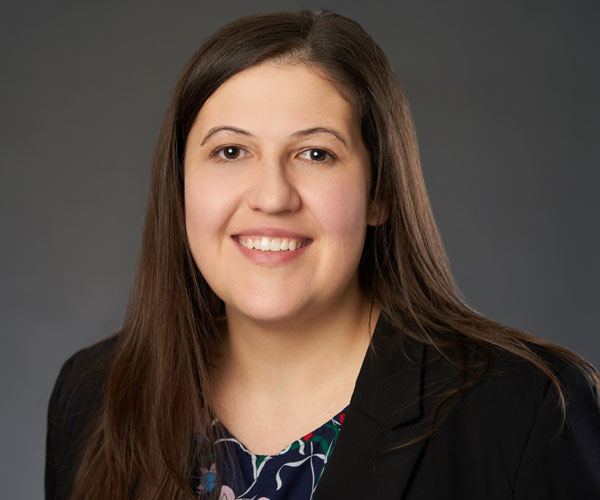CFPB Issues TRID FAQs
Written by Brandy Bruyere, Vice President of Regulatory Compliance, NAFCU
Anyone who has submitted a question to the CFPB’s regulatory inquiries system has probably had one of two experiences. Either you receive a response in a relatively quick turnaround that seems to be a stock answer of sorts, or you wait quite a while and perhaps get a phone call back to discuss the issue. It always left me thinking, if there are set answers to some questions that come up often, wouldn’t it be nice if the Bureau would publish guidance in FAQ format like we see with FinCEN and other regulators? Seems like it would save time and be more efficient for both those who are asking questions and the Bureau staff tasked with responding to inquiries. On Friday, February 1, the Bureau took a step in this direction by publishing four FAQs on TRID.

One FAQ clarifies that even though TRID was amended in 2017 and the model forms were not, using the model form provides a safe harbor “if the [credit union] uses the appropriate model form” and “completes it with accurate content.”
The other three FAQs address corrected closing disclosures and the three-day waiting period. As a reminder, under TRID, the Closing Disclosure must be provided at least three business days before consummation, and FAQ #1 reviews this general rule. If something changes and a revised Closing Disclosure needs to be issued, there are three scenarios where the regulation requires a new three-day waiting period before consummation:
- The loan product is changed such that what was previously disclosed is not accurate;
- A prepayment penalty is added; or
- The APR “becomes inaccurate, as defined in §1026.22.”
When TRID went into effect, many noted that the accuracy of rates is not necessarily based on whether the rate goes up or down, so it seemed to indicate that in some cases, the rate could go down but a new waiting period may still be required.
Some of you may recall that when Congress passed S.2155, one section was called “No wait for lower mortgage rates.” We blogged about how this seemed to be intended to amend the Truth in Lending Act so it would be explicit that a new three-day waiting period is not required if the rate goes down, but Congress only amended the statutory provision for high-cost mortgages, not all TRID loans. Despite the apparently Congressional intent and that this seemed to be a drafting error, in FAQ #3 the CFPB decided to implement S.2155 as it is strictly written:
“…Section 109(a) of [S.2155] did not change the timing for consummating transactions if a creditor is required to provide a corrected Closing Disclosure under the TRID Rule.
Section 109(a) of the [S.2155], which is titled “No Wait for Lower Mortgage Rates,” amends Section 129(b) of the Truth in Lending Act (TILA). TILA Section 129(b) governs when certain disclosures must be provided for high cost mortgages and the waiting periods for consummating a transaction after the creditor has provided those high cost mortgage disclosures. 15 U.S.C. § 1639…”
This may indicate the Bureau is continuing to take a strict reading of its statutory authority and not step beyond those boundaries.
So what about that three-day waiting period if the APR becomes inaccurate, but goes down? FAQ #2 discusses the this for when the previously disclosed APR is overstated, and cites to some pretty technical provisions of Regulation Z:
“The answer depends on whether the overstated APR that was previously disclosed on the Closing Disclosure is accurate or inaccurate under Regulation Z. If the overstated APR is accurate under Regulation Z, the creditor must provide a corrected Closing Disclosure, but the creditor is permitted to provide it at or before consummation without a new three business-day waiting period… If the overstated APR is inaccurate under Regulation Z, the creditor must ensure that a consumer receives a corrected Closing Disclosure at least three business days before the loan’s consummation (i.e., the inaccurate APR triggers a new three-business day waiting period). 12 CFR § 1026.19(f)(2)(ii).”
In other words, an overstated APR could be inaccurate based on the tolerances outlined in Regulation Z. FAQ #2 goes on to discuss these tolerances in more detail. The Bureau’s answer goes on to cite to a thorough article published in 2011 by the Philadelphia Federal Reserve’s Consumer Compliance Outlook. This piece is helpful for understanding APR accuracy and tolerances for mortgage loans, but here is an excerpt that may help fill in when there could be an overstated APR might be inaccurate resulting in a new three-day waiting period:
“The general rule for determining the accuracy of an APR for transactions secured by real property is that if the finance charge is overstated, and as a result, the corresponding APR is overstated, that APR would be considered accurate. Therefore, it is tempting to presume that any overstatement of an APR for transactions secured by real property would never trigger the three-business-day waiting period in addition to redisclosure. However, this presumption is not always correct. Overstatements of APRs can trigger redisclosure along with the three-business-day waiting period, as illustrated in the example below.
Assume an $8,000 loan secured by real property with an annual interest rate of 13 percent with no prepaid finance charges, and 60 monthly payments of $182.02. However, the lender included a $300 title search fee as a finance charge. The title search fee is not a finance charge. With no other charges except interest, the actual APR in this example would be 13 percent. The APR that corresponds to the $300 overstated finance charge would be 14.71 percent. The lender disclosed a 14.85 percent APR, which is unrelated to the overstated finance charge.” (Emphasis added)
If that seems about as clear as mud, the article has some flow charts that help illustrate the examples which may prove helpful.
About the Author
Brandy Bruyere, NCCO, Vice President of Regulatory Compliance/Senior Counsel, NAFCU
 Brandy Bruyere, NCCO was named vice president of regulatory compliance in February 2017. In her role, Bruyere oversees NAFCU's regulatory compliance team who help credit unions with a variety of compliance issues.
Brandy Bruyere, NCCO was named vice president of regulatory compliance in February 2017. In her role, Bruyere oversees NAFCU's regulatory compliance team who help credit unions with a variety of compliance issues.
